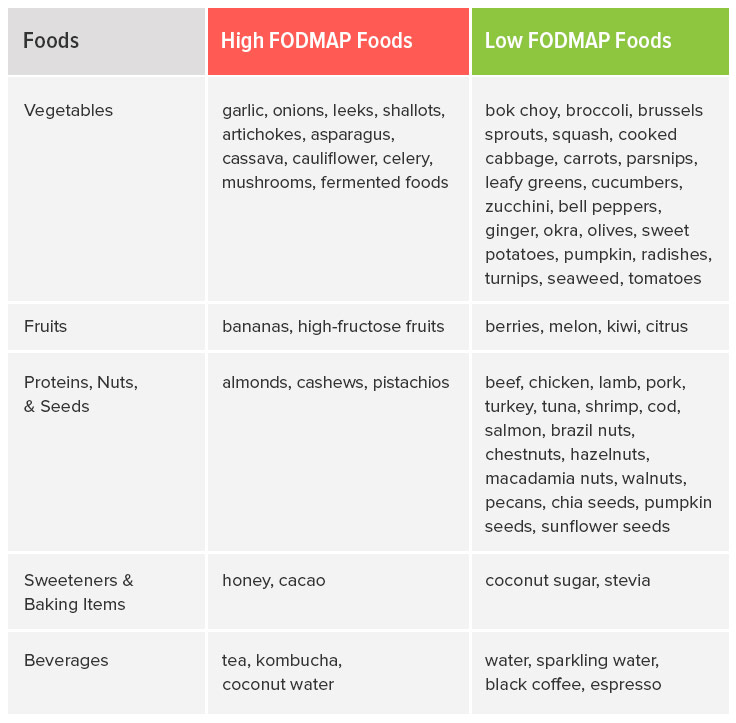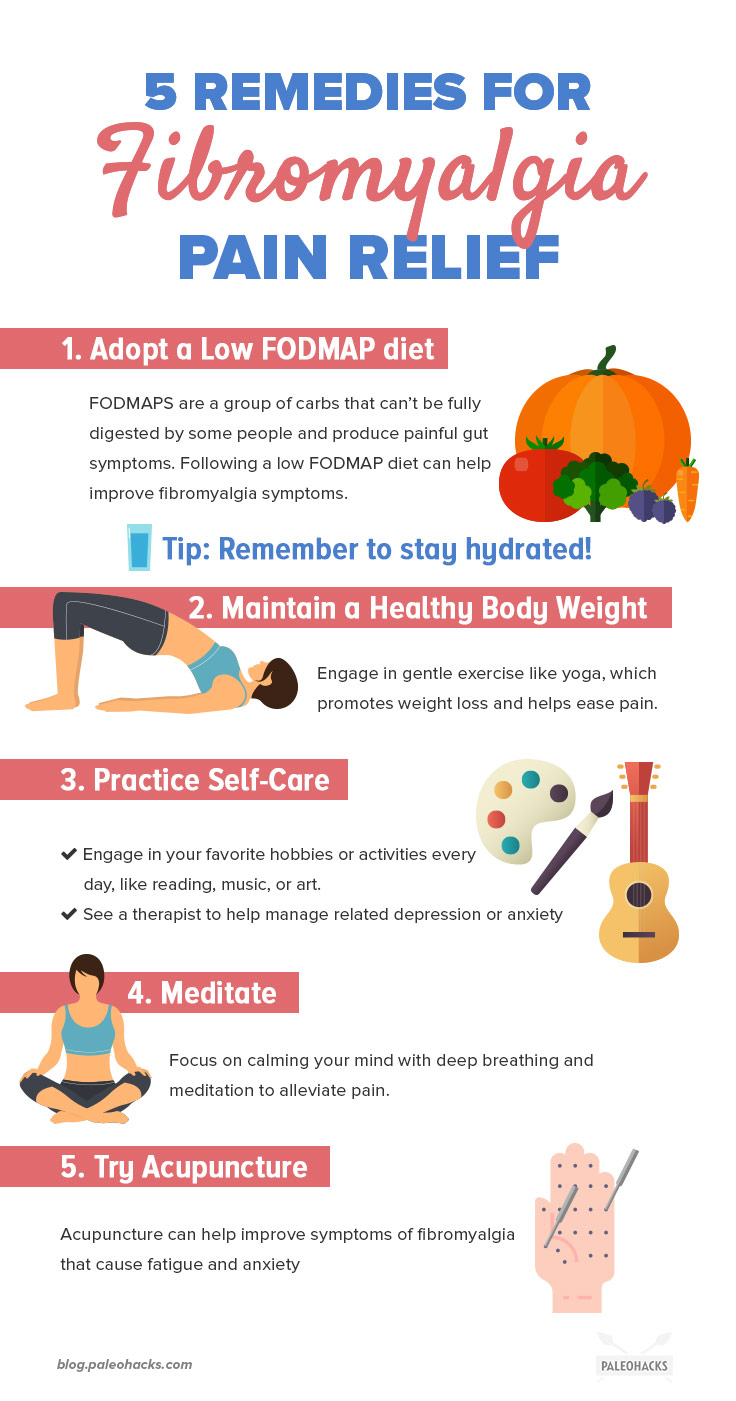Do you feel stiff, achy, and more tired than usual? It might not just be signs of aging, but could be a chronic condition known as fibromyalgia.
Fibromyalgia is a chronic disorder with symptoms like fatigue and widespread body pain.
While there is no cure for fibro, as it’s often referred to, it responds well to diet and lifestyle changes. The disorder affects 10 million people in the U.S., and as much as six percent of the population worldwide, with as much as 90 percent being women. (1)
Fight inflammation and create easy, healthy meals! We've created a FREE 7-Day AIP Meal Plan
Get Your FREE 7-Day AIP Meal Plan here.
What is Fibromyalgia?

Fibromyalgia is primarily associated with pain, although of a different nature than osteoarthritis or rheumatoid arthritis. It can cause symptoms like fatigue, sleep disorders, and nervous system changes like depression. Fibromyalgia tends to be diagnosed most frequently in women between the ages of 20 and 50. However, the exact trigger for developing the condition is hard to pinpoint. Research indicates that one or more of the following could be involved in the development of fibromyalgia:
- Genetics: Fibromyalgia often runs in families. While studies on the role of genetics are ongoing, there are a number of common disease-related mutations found in those who have fibromyalgia. (2)
- Viruses: Viral infections are a common trigger of chronic disorders, and even dormant viruses from childhood can get reactivated from environmental or stress triggers. Viruses associated with fibromyalgia triggers include Hepatitis C, Lyme disease, and HIV. (3)
- Stress and trauma: Fibromyalgia is linked to post-traumatic stress disorder (PTSD) as well as chronic disturbances in stress hormone levels, indicating that severe mental strain can trigger the development of the syndrome. (4)
- Autoimmunity: Although fibromyalgia is not technically an immune-based disorder, many people diagnosed with fibro display the same inflammatory markers as those with autoimmune disorders like osteoarthritis or Sjogren’s syndrome. (5)
Bottom line: Fibromyalgia is a chronic disorder that displays symptoms across the body, most notably pain and fatigue. It is not autoimmune but is often associated with autoimmune conditions. Fibro is primarily seen in women who are over the age of 30 and there is no known cure.
Symptoms of Fibromyalgia

Fibromyalgia was once diagnosed by assessing the pain levels of 18 different “trigger points”, or areas of the body where light to moderate pressure produced a more severe pain reaction than the average person. To receive a fibromyalgia diagnosis, people had to produce excessive pain responses in at least 11 of these trigger points, which included areas around the back of the head, shoulders, chest, hips, knees, and elbows.
These trigger points are no longer the only method of diagnosing fibromyalgia, but they’re still considered a helpful diagnostic tool.
In addition to trigger point pain, the following symptoms are commonly seen in fibromyalgia: (6, 7, 8, 9)
- Muscle pain
- Bone pain
- Joint pain
- Numbness or tingling in extremities
- Fatigue
- Depression
- Anxiety
- Poor focus and mental clarity, also referred to as “fibro fog”
- Sleep disorders
- Headaches
- Dull but constant pain in the lower abdomen
- Jaw pain or clicking
- Diarrhea or intestinal disturbances
- Painful menstruation
- Sensitivity to noise, light, and sudden temperature changes
While the reasons for flare-ups vary from person to person, common triggers for fibro include:
- Stress
- Viral or bacterial infections
- Exhaustion
- Certain weather patterns or seasons
5 Remedies for Fibromyalgia Pain Relief
If you have fibromyalgia, you’ll notice that it’s a come-and-go type of condition. Some days are good, some are bad, and overall seasons are characterized by more or less pain.
The good news is that fibromyalgia responds to lifestyle and dietary management. If you’re having a flare, the following ways can calm the pain and bring you back to balance.
1. Adopt a Low FODMAP diet
Research indicates that following a low FODMAP diet can help improve fibromyalgia symptoms. (10)
FODMAPS are carbohydrates that aren’t fully digested by some people and produce painful symptoms, like bloating, gas, and systemic pain. Because the gut is so well-connected to the rest of the body via an intricate nerve system, gut problems can extend to systemic pain triggers.
Some FODMAP foods, like grains and refined sugar, are already restricted on the Paleo diet. Other Paleo-friendly foods to avoid on a low-FODMAP diet include:

Avoid anything with gluten and “fake” foods like artificial sweeteners and preservatives, as they are associated with fibro flare-ups. (11, 12)
Remember to stay well-hydrated. Without enough water, the digestive system can’t properly break down food and eliminate waste. This can lead to further intestinal problems.
2. Maintain a Healthy Body Weight

Carrying extra weight can worsen the symptoms of fibromyalgia and can result in more frequent flare-ups or pain.
Weight reduction can improve the quality of life in people with fibromyalgia. (13) Once you begin to follow a diet that helps to reduce inflammation and intestinal issues, you may start losing weight naturally.
Gentle exercise like yoga is effective in both weight loss and pain management. (14, 15) Reducing weight through yoga can also improve other fibro-associated factors like sleep problems, depression, and anxiety. (16, 17, 18)
3. Practice Self-Care

Looking after yourself is a vital part of managing chronic conditions. Make time to enjoy your favorite hobbies or activities, like reading, music, or art, and surround yourself with loved ones.
Self-care can also invovle seeing a therapist or other practitioner who helps you manage your fibro or associated symptoms. Since depression and anxiety can be side effects of fibromyalgia, working with a qualified therapist or participating in group therapy can provide coping tools for when you’re having a flare.
4. Meditate

5. Try Acupuncture
Acupuncture is a foundational element of Traditional Chinese Medicine and is recommended as a complementary treatment. Small needles are inserted into different points of a patient’s skin to relieve pain.
A study involving 50 patients found that acupuncture significantly improved the symptoms of fibromyalgia that cause fatigue and anxiety. (20)
The Bottom Line
Fibromyalgia is a chronic disorder associated with widespread pain and fatigue. While there is currently no cure, natural lifestyle changes and dietary modifications can help ease symptoms.

(Read This Next: Crohn’s Disease: What It Is, Types and Trigger Foods to Avoid)


 Coconut Flour Everything Cookies
Coconut Flour Everything Cookies








Show Comments